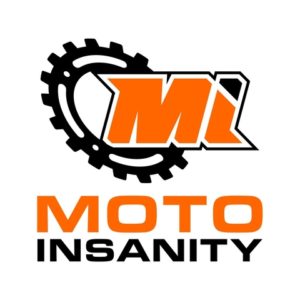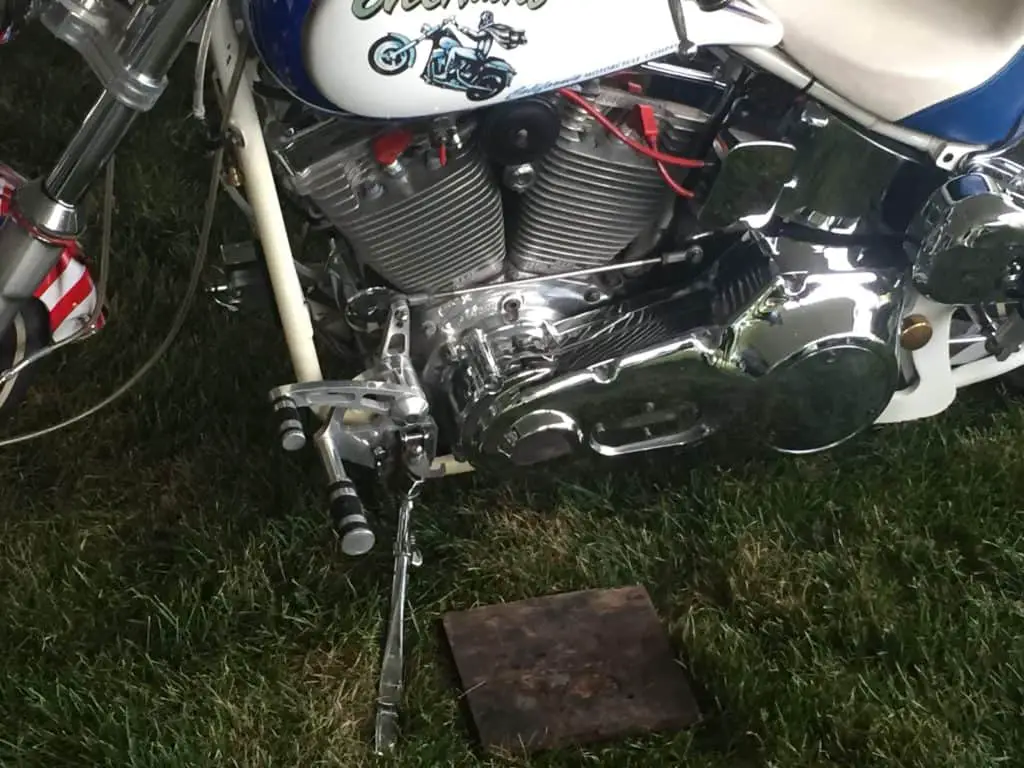
Working on my daughters ATV made me wonder about all the different motorcycle engines. There are many motorcycle engine designs.
What kinds of engines do motorcycles have? We can classify motorcycle engines in the following ways: 2-Stroke or 4-stroke, air or liquid cooled, or by the number of cylinders. Here is a list of the different engines
- Single
- Parallel
- V-Twin
- Boxer Twin
- Triple
- Inline-4
- V-4
- Inline-6
- Flat-4
- Flat-6
- Oval piston V-4
- V-8
You can see how complicated motorcycle engines become from the short bit of information. Cars are much simpler since they are all 4-stroke and liquid cooled. They do not have as many cylinder combinations as motorcycles. Let’s talk about each way to classify a motorcycle engine.
Comparing 2-Stroke and 4-Stroke Motorcycle Engines
When you spend any time on YouTube searching for dirt bikes, you notice a theme emerging from many videos. It is the 2-stroke vs 4-stroke.
I think of it as the old school vs the new school. Many of the older dirt bikes were 2-strokes and in the mid-2000s the 4-stroke took over as a main player in the dirt bike arena.
You can see the emergence of this transition in supercross. If it interests you to learn more or see how the transition took place, take some time and research the supercross by year on YouTube.
Why did the 4-stroke take over the 2-stroke?
Ask any rider why this transition happened and you’ll get a different answers, but one common point that comes up is the pollution from 2-strokes. I am not here to get into the pollution or climate change topic. We know there are more pollutants coming from 2 strokes versus a 4 Stroke.
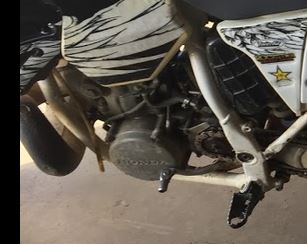
There would have been pressure coming from government bodies that helped push the change like the Environmental Protection Agency.
On a side note, you can even see the transition from 2 strokes to 4 strokes taking place sooner in the ATV world. On the surface you would think the transitions would have been at the same time.
You should know the differences between a 2-stroke and 4-stroke. By the time we are are done comparing the two engines, you will know how they work and be able to identify each one.
Difference In The Sound of the 2-Stroke and 4-Stroke
Did you take the time to search YouTube for the supercross history? If not, I would suggest you do it now. Pay attention to the sound of the bikes as you move through the early 2000s.
You will hear the pack of bikes moving from the sound of angry hornets to as sound that is much deeper. This is the best way to see the sound difference of a 2-stroke and 4-stroke.
The rivalry between the two engines is strong, I guess you could also just search 2-stroke vs 4-stroke on YouTube.
The two stroke will have a higher pitch yinging sound versus the 4 stroke which will be much throaty and deeper sound.
Engine Differences
The two engines operate differently to get through a full cycle of bringing fuel into the engine and pushing out the exhaust.
The 2-stroke will fire every revolution of the engine. The 4-stroke will fire every other revolution of the engine.
You can say the 2-stroke creates more power for every two revolutions given the same cc for the two styles of engine.
The general layout of the engines is also different. The 4-stroke engine is more complicated and more moving parts.
For example, the 4-stroke will have intake values allowing fuel and air into the cylinder and an exhaust value to let the burn air and fuel out of the cylinder. This is the reason the 4-stroke only fires every other revolution.
Because of the way a 2-stroke works, the engine is much more efficient in bringing fuel into the engine and getting the exhaust out.
Parts For 2-Stroke and 4-Stroke
I already mentioned that 2-strokes have fewer moving parts than a 4-stroke. Fewer moving parts makes them simple.
Simplicity keeps things economical. Look and see for yourself.
Like always there are exceptions to this comment. When bikes get beyond 30 years old, they become “classics” and parts become much harder to find. It does not matter if the part is for a two or four stroke motorcycle.
I can vouch for this right now. My daughters 1986 Yamaha 4-Zinger ATV needs the throttle cable replaced. The part I ordered from the online schematic was not correct and I cannot find one anywhere else online.
The one cable I found that might have been the correct one was expensive.
As it applies today, we are talking about dirt bikes. There are few street legal 2-strokes manufactured today.
The second exception to this “2-strokes are cheaper” is the future. As the world moves more towards 4-strokes and then on to electric, the 2-strokes will probably fade away and parts for the 4-strokes will become cheaper.
Difference In Weight of the 2-Stroke And 4 -Stroke
More parts creates more mass and weight for the motor. The more weight a motorcycle carries means upgraded parts for the suspension. Guess what? This adds more weight to the bike.
Brakes must also be upgraded for motorcycles that weight more.
Some of you might think I am going overboard a bit. The fact is that the designers had to consider these elements as they designed the motorcycle. We all know more weight slows a motorcycle down so engineers try to shave off as many pounds as they can.
Having extra weight on a 4-stroke is not always bad.
If the engineers did a good job positioning the motor by placing it low and towards the center of the bike, the extra weight may not be a big deal. When you are doing technical riding, the extra weight helps keep the momentum of the bike up helping you get up hills with a little extra traction.
Powerband Of the 2-Stroke Vs 4-Stroke
Delivery of the engine’s horsepower matters. Sometimes, we need it quickly and sometimes slowly over a wide range of RPMs.
The best way I can describe the two stroke is by telling a quick and funny side story.
My wife had an old car we were trying to sell. A younger female and her mom came to test drive this car. It was priced for only a few hundred dollars to reflect some issues I did not want to deal with on the vehicle. (The issues were all disclosed before they even got into the car.)
One of these problems was the gas pedal. You almost had to kick the thing to get it to move. Neither lady seemed concerned.
Long story short, they went to take off , and it looked like the young lady was driving a drag car. The power came on and she took off quickly.
This is what a 2-stroke is like. The power comes on suddenly and stays over a shorter range of RPM’s.
A 4-stroke is much smoother and provides good power over a much wider range of RPMs.
What Is The Difference Between An Air Cooled and Liquid Cooled Motorcycle Engine?
When we say cooled, we are talking about how to get rid of the engine’s heat.
Air Cooled Motorcycle Engine
For the longest time, engines were air cooled. The best way to identify an air-cooled motorcycle is by looking at the cylinder and finding the cooling fins.
As the motor builds head from the combustion and friction of moving parts, the heat needs to be removed, or it becomes so excessive the engine will seize.
The cooling fins transfer the heat from the internal components of the engine. As the fins move through air as the bike moves, heat is dissipated even more heat allowing the motor to operate with in an acceptable temperature.
The motorcycle can also sit for long periods of time, but the heat will slowly build. I can tell you from sitting on my air cooled cruiser many time in traffic jams.
Liquid Cooled Motorcycle Engine
A liquid-cooled motorcycle engine operates in the same manner as a car.
A radiator holds a liquid that passes through the engine. As the liquid moves through the engine it collects and transfers heat from the motor back to the radiator.
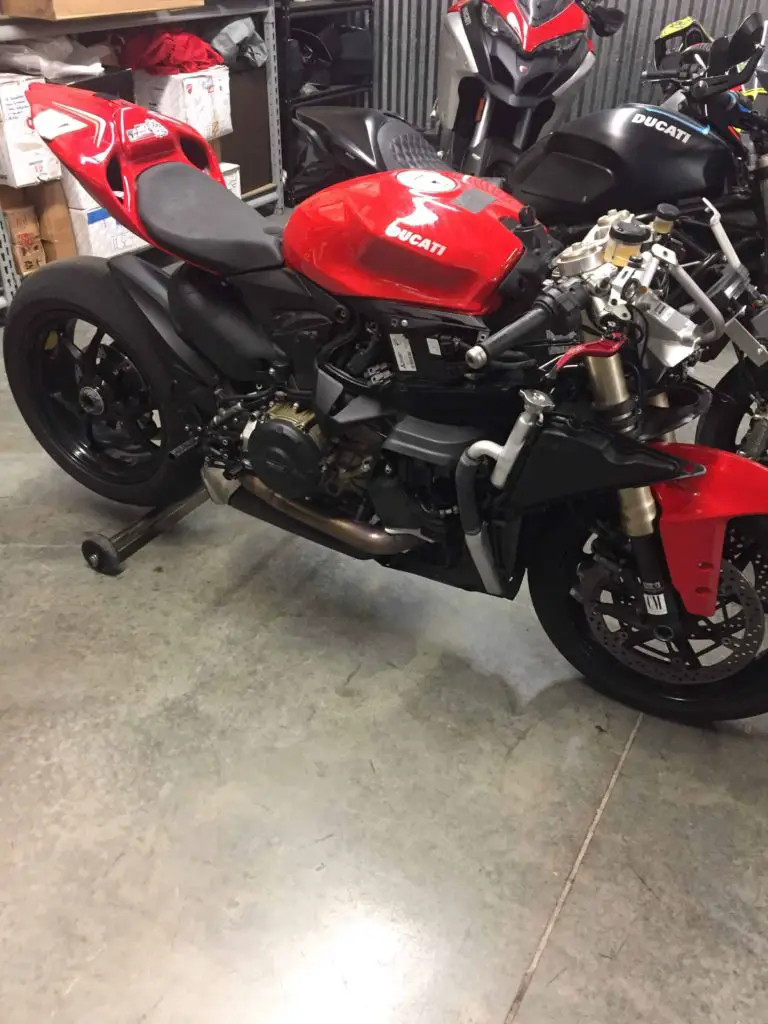
Wind then passes through the radiator removing the heat from the liquid only to have the antifreeze pass back through the engine again.
Motorcycle Engines By The Number of Cylinders
The most common way riders classify engines is by the number of and configuration of cylinders. Here are the most common types of motorcycle engines by this method.
Single
You can probably tell from the word single there is only one piston in this engine.
This is the most common style of engine for dirt bikes and ATVs. In fact, outside of the Yamaha Banshee ATV and Warrior, I am not aware of any other engine configuration for off-road. The two ATVs just mentioned are both twins.
While there are a good number of single engines for street riding, it is not as common.
There are loyal enthusiasts who refer to their single cylinder engines at thumpers. They usually have a specific criteria calling an engine a thumper. You can check out this article I wrote and learn more about singles as they compare to other motorcycle engines.
Parallel
Imagine two singles side by side and you have a parallel. These engines have two configurations within their subset of motorcycles.
The first has the crankshaft pins off set so the firing is roughly 270 degrees. This creates more vibration in the engine but it gives the bike an awesome sound. In fact, you may mistake it for a V-twin.
The second parallel engine has the crankshaft pins in the same location. These engines are a lot smoother than the off-set.
The parallel engine is the preferred power plant for the cafe racer enthusiast and mainly associated with British motorcycles, the birthplace of the cafe racer.
V-Twin
A V-twin is like a parallel because it has two cylinders but instead of running side by side they make a V. This style of engine is most commonly found in a cruiser motorcycle.
Their popularity rose in the early twentieth century from American manufactures Harley-Davidson and Indian.
Outside of the V shaped engine, the sound will be the next most recognizable attribute. Most riders describe phonetically as potato, potato, potato.
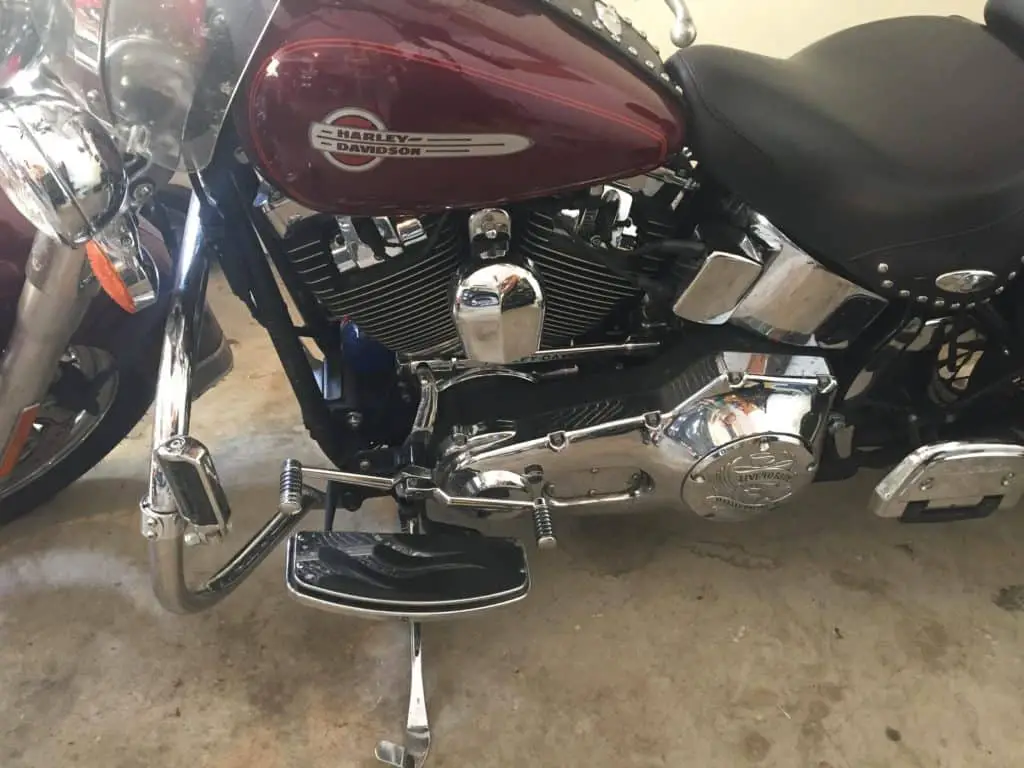
If you are like me, the sound of a parallel may be confused for the sound of a V-Twin.
The last thing to know about a V-Twin is the high torque they produce which makes the engine good for cruisers. They do not rev high, but can lug in the same way a locomotive does.
Boxer Twin
I find the boxer engine one of the most interesting. It has an odd shape when you first look at the motorcycle. You notice the protrusion from each side of the engine and then wonder how the thing corners.
The protrusions from the motorcycle encase the cylinders and pistons. The engine got its name from the piston’s movement. It is said the rider should imagine a boxing match and the pistons look like the fighter’s throwing punches at each other.
BMW is the only manufacturer I know of that produces this style of engine. They have done a great job with it and made it work in motorcycles that would not seem to be a good match.
Specifically, BMW makes this engine style work in adventure bikes.
Triple
Add a third piston to the parallel and you have a triple. A rider will find this engine in a few Japanese bikes.
This motor did not become popular and does not have any attributes or style for which they knew it.
Inline-4
By far, the most popular motorcycle engine of all time is the inline-4. Look at any Japanese bike (outside of a cruiser) and the odds are high it will have an inline-4.
These engines rev high and have lots of horsepower at the increased revs. This makes them favorable for racing.
When looking at the engine from a practical standpoint, it lacks usability at lower RPMs and torque.
All but two of my street bikes have been inline-4s. They have been great, but you need to know of the maintenance related of 4 carburetors if you own an older bike.
One of my favorite features of this engine style is the smooth power delivery. What it lacks in torque at low RPMs it makes up for in smooth delivery.
V-4
By now, I am guessing you know how I will describe the V-4. Yep, two V-twins.
Honda makes the most popular model I know. We typically find them in higher end sport-touring machines.
These engines combine the smooth power delivery of the inline-4 with the torque of the V-Twin.
Inline-6
The inline-6 has no practical application and argued it was a publicity stunt.
Flat-4
Normally I would not even bring up the flat-4, but the popularity and a cult following of one model require that it shows up on the list.
The one motorcycle is the Honda Goldwing. The motor has opposing pistons like the boxer but there are 4 of them.
Flat-6
Add two more pistons to the flat-4 and you now have the flat-6. Again, it is not really a popular model.
V-8
There was a time in my life when my buddies would talk about shoving a small block V8 into everything. While our conversations mainly applied to cars, I never thought it would happen to a motorcycle.
Can you imagine riding on top of a V8 car engine? Well, Boss Hoss made it happen. The best thing I can tell you is to check out their site. These things are crazy.
